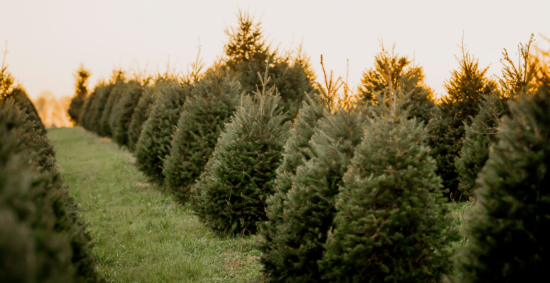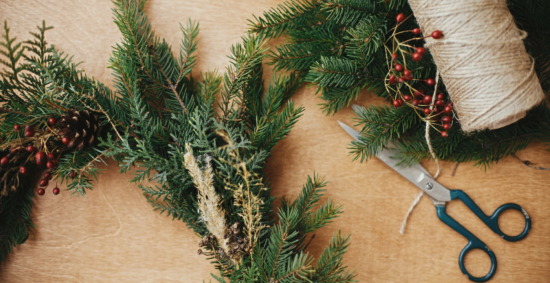Resources and Tips for a Profitable Christmas Tree Farm

If you have some extra land on your property, you can earn money by starting your own Christmas tree farm. Tree farms require less day-to-day work than other forms of agriculture, making this a great small business idea.
These tips can help you start your tree farm and maximize your profits.
Come Up With a Business Plan
Developing a business plan is the first step to success for your Christmas tree farm business. It’s a unique business idea, so you must think carefully about how you’ll run your farm. Planning ahead will make it much easier to succeed.
Consider how much money you’ll budget for buying seedlings in your first year and how much you’ll spend each year after that. Will you use your own land or lease property from someone else? How will you recover if there’s a poor growing season?
As you develop your plan, you can identify potential issues you’ll face when growing Christmas trees and devise a strategy for dealing with those pitfalls.
Check out this story from a successful Christmas tree farm owner.
Stagger Your Tree Planting
Christmas tree farmers generally want consistent business from year to year. However, seedlings can take years to grow into a tree worth selling.
Try to avoid planting on all of your land right away. Instead, consider planting only on a portion of your land in the first year. Plant more the following year and each year after that. As your first batch of trees matures, you can harvest them and plant new trees.
If you plant all over your property in one year, you’ll have years of no trees to sell, followed by one holiday season with an abundance of trees and no trees again. Staggering your planting will limit the workload and help you keep your income consistent yearly.
Choose the Right Tree Species
If you’re selling Christmas trees, you can’t just put any old tree up for sale. Consumers have a good idea of what they want a Christmas tree to look like, so you must choose the right species.
In general, Christmas trees are evergreens. However, the specific species of evergreen you choose can be a big deal. These are the most popular options:
- Douglas fir trees are dark green and have a strong fragrance, which is often a plus for people who prefer real Christmas trees to artificial trees. They are among the most popular species, making up about half of the sales for the Christmas tree industry.
- Blue spruce trees are a more silvery-blue tree. They are the state tree of Colorado and naturally grow in a conical shape.
- Fraser fir trees are yellowish green and have strong branches, making them ideal for hanging decorations.
- Scotch pine trees are known for long-term needle retention, meaning your customers will have less cleanup to do at the end of the holiday season.
- Balsam fir trees are dark green, and their branches are popular with people looking to make Christmas wreaths.
Choosing the right types of Christmas trees to plant requires market research, so see if you can learn anything about local sales trends. You could also plan on planting multiple varieties to give your customers options.

Sell Complementary Products
Christmas trees are popular for people to buy during the holidays, but you can make extra money by selling complementary products. For example, planting holly or mistletoe can help you increase your sales.
You could also consider selling ornaments, tinsel, and other decorations or putting up a stand to sell hot chocolate and other warm beverages for people to drink while they shop for their tree.
Advertise
The Christmas tree industry is a large one. The National Christmas Tree Association has over 700 active member farms and 4,000 affiliated businesses in North America, Europe, and South America.
Christmas tree growers in the association produce about three-quarters of the trees sold in the United States. This means you’ll compete in a popular market, making a solid marketing strategy important.
One of the easiest ways to advertise is through social media. Post in local community groups so potential customers can learn about your business and what you have available. You can also hand out flyers, work with local businesses to put up posters, and put signs on your property.
Don’t Forget Insurance
With any business venture, it’s essential to make sure that you’re adequately insured. While growing trees might not seem particularly high-risk, accidents can happen.
For example, when you harvest trees, you’ll likely work with a chainsaw or other heavy machinery. You’ll also be using a lawn mower when mowing your tree farm.
During the holiday season, your employees will lift heavy trees, use machinery, and be involved in other activities that could lead to injury. Buying liability insurance and additional coverage can help prevent an accident from ruining your successful business.
Use Sustainable Agriculture Practices
Before you start your Christmas tree farm, learn about sustainable agriculture practices. You’ll need to ensure that your land remains productive for years to come, and you want to avoid damaging the local environment.
A successful Christmas tree farm can last for decades and be passed down through generations of your family. The last thing you want is to destroy the productivity of your land with harsh herbicides, ineffective weed control, and a general lack of care for the environment.
Summary
Starting a Christmas tree farm can be a fun way to earn some extra money, but it isn’t the type of side hustle that will turn a profit in a few weeks or even months. There can be years between when you plant your first seedling and make your first sale.
However, if this slower-paced business appeals to you, there’s no better time to start than now.




![How to Make Money Blogging [10 Important Questions Answered]](jpg/pt-making-money-from-blogging-768x512.jpg)